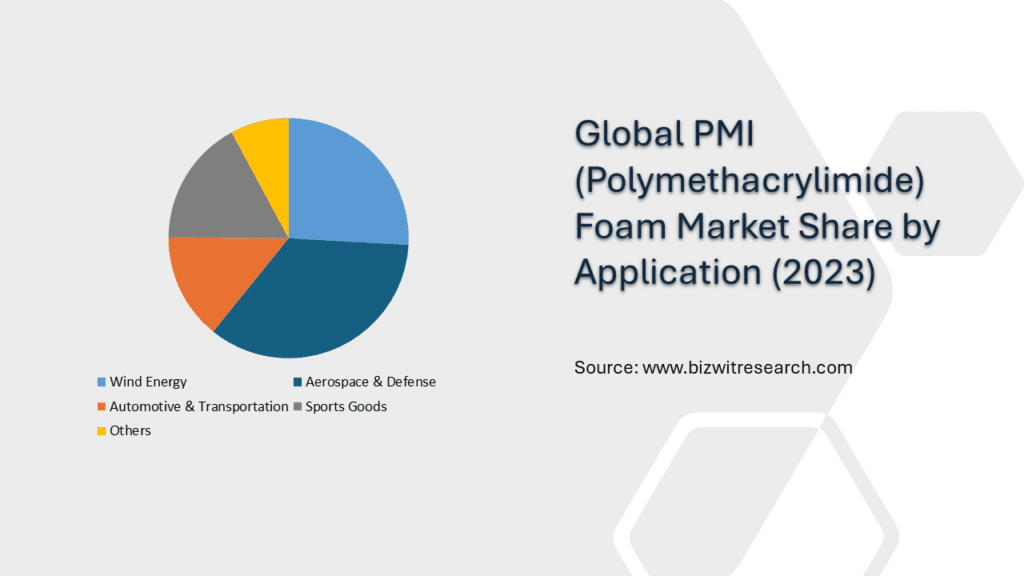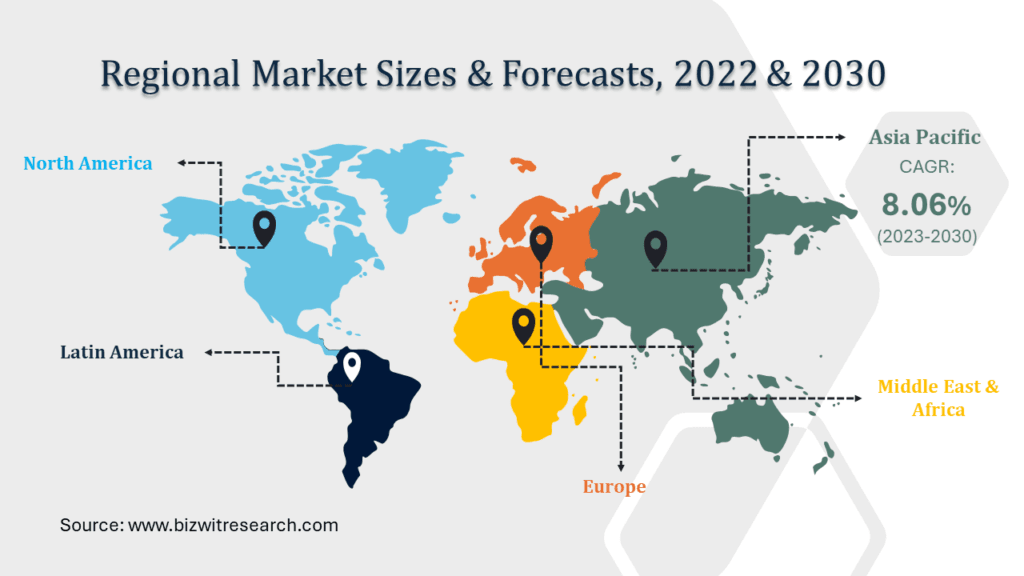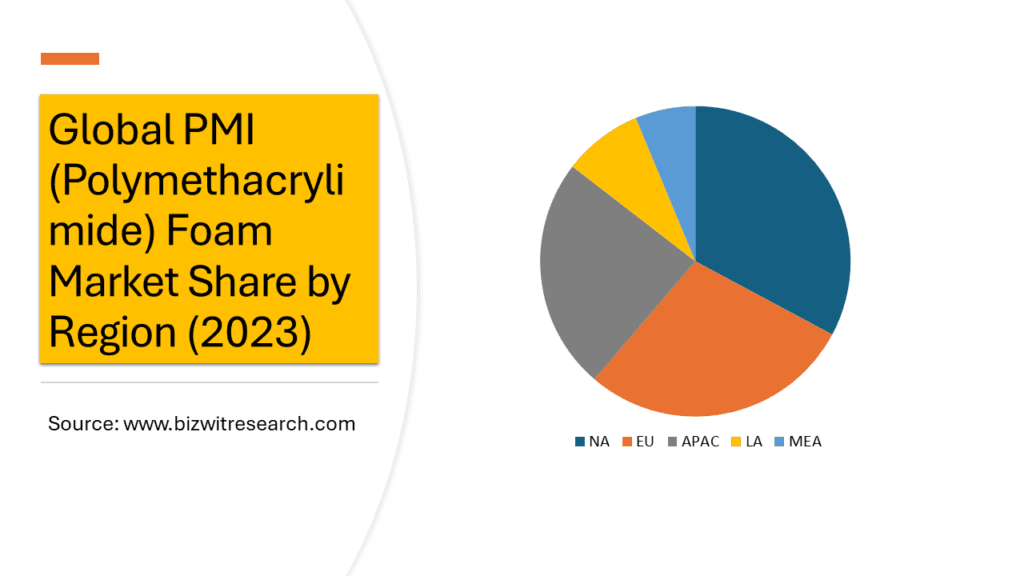Global PMI (Polymethacrylimide) Foam Market is valued at approximately USD 101.7 million in 2022 and is anticipated to grow with a healthy growth rate of more than 6.52% over the forecast period 2023-2030. PMI foam, an acronym for Polymethacrylimide foam, is a closed-cell foam renowned for its remarkable strength-to-weight ratio and superior thermal insulation attributes. The manufacturing process involves polymerizing methacrylimide monomers, resulting in a rigid and thermosetting foam characterized by a finely uniform cell structure. PMI foam is lightweight nature and high strength render it well-suited for various structural applications widely utilized across diverse industries, including aerospace, marine, and automotive sectors. It offers outstanding temperature resistance qualifies it for use in high-temperature settings such as jet engines and spacecraft.
Furthermore, PMI foam exhibits resistance to moisture, chemicals, and UV radiation, making it particularly advantageous for outdoor and marine applications. This versatile material’s properties position it as a valuable choice in demanding environments where its combination of strength, insulation, and resilience to external factors proves beneficial. The market growth is being attributed by the factors such as increasing use of PMI foam across the automotive & transportation sector, imposition of stringent regulations regarding weight and emissions control, and rising enhancement of properties of PMI foam.

For further analysis on the study, request a sample copy
In addition, the surge in demand for composites-based sports products is acting as a catalyzing factor for the market demand across the globe. Composite materials, such as PMI (Polymethacrylimide) Foam, offer a high strength-to-weight ratio. This property of PMI foam is particularly advantageous in sports equipment, where lightweight as well as strong materials that enhances their performance without affecting durability. Accordingly, the increasing popularity of sports products designed with composite materials is poised to significantly impact the demand for Polymethacrylimide (PMI) Foam. Prominent for its lightweight and robust attributes, PMI foam is considered as an ideal complement to the weight reduction objectives intrinsic to composite structures.
In varied sports equipment such as mats, gloves, grippers, and sports shoes, the use of PMI foam contributes to heightened performance through the reduction of overall weight without compromising structural integrity. According to Statista, in 2022, the sports composites segment valued at USD 4 billon around the world, which is anticipated to reach USD 4.58 billion by the end of 2024. The adaptability and moldable nature of PMI foam, combined with the design flexibility of composites, allows manufacturers to customize sports products according to specific performance requirements. This collaboration facilitates the development of uniquely designed equipment and optimizes performance characteristics, catering to athletes seeking personalized solutions.
Moreover, the growing focus on the adoption of PMI foam in the aircrafts, as well as the rising inclination towards clean and renewable energy source present various lucrative opportunities over the forecasting years. However, the high cost associated with PMI foam and availability of alternative materials are challenging the market growth throughout the forecast period of 2023-2030.
Based on the Application, the PMI (Polymethacrylimide) Foam Market is segmented into Aerospace and Defense, Wind Energy, Transportation, Sporting Goods and Others. Aerospace and defense industry is leading the market share of the application segment owing to factor such as rising government initiatives to control carbon emissions from the industry, rising military spending and rising adoption of fuel-efficient aircraft.

The key regions considered for the Global PMI (Polymethacrylimide) Foam Market study include Asia Pacific, North America, Europe, Latin America, and Middle East & Africa. In 2023, North America asserted its dominance in the PMI foam market, capturing over 32% of the global revenue share. The robust growth observed in the aerospace & defense and wind energy industries within this region is anticipated to be a key driver for the increased demand for PMI foams. These lightweight and structurally strong materials are essential for the production of components in these dynamic sectors.

Following closely, Europe secured the second position in revenue generation. The market’s momentum in this region is propelled by substantial advancements in aerospace & defense and wind energy applications. Notably, the addition of 15.4 GW in wind energy power generation, as reported by Wind Europe, reflects a significant growth trajectory, projecting a positive impact on PMI foam demand throughout the forecast period.

Conversely, the PMI foam market in Southeast Asia is poised for a comparatively slower growth trajectory in contrast to North America, Europe, and the broader Asia Pacific region. This deceleration is attributed to the adverse effects of the COVID-19 pandemic on cross-border trades among economies. Despite this, the market in Southeast Asia finds momentum through the rising demand for sports goods. As sporting activities gain popularity, there is a corresponding increase in the requirement for PMI foams, showcasing the versatility of these materials in meeting diverse industry demands.
Major market players included in this report are:
Evonik Industries AG
Solvay S.A.
Baoding Meiwo Engineering Materials Technology Co., Ltd.
Tasuns Composite Technology Co., Ltd.
Hunan Rifeng Composite Co., Ltd
BASF SE
Covestro AG
Diab Group
Future Composites Co., Ltd
CEL COMPONENTS S.R.L.
Recent Developments in the Market:
- In 2023, Evonik unveiled a substantial enhancement of its Rohacell PMI foam manufacturing capabilities located in Hanau, Germany. This strategic expansion is geared towards fulfilling the escalating need for PMI foam across diverse industries, with a special focus on the burgeoning demands within the aerospace and automotive sectors.
Global PMI (Polymethacrylimide) Foam Market Report Scope:
- Historical Data – 2020 – 2021
- Base Year for Estimation – 2022
- Forecast period – 2023-2030
- Report Coverage – Revenue forecast, Company Ranking, Competitive Landscape, Growth factors, and Trends
- Segments Covered – Application, Region
- Regional Scope – North America; Europe; Asia Pacific; Latin America; Middle East & Africa
- Customization Scope – Free report customization (equivalent up to 8 analyst’s working hours) with purchase. Addition or alteration to country, regional & segment scope*
The objective of the study is to define market sizes of different segments & countries in recent years and to forecast the values to the coming years. The report is designed to incorporate both qualitative and quantitative aspects of the industry within countries involved in the study.
The report also caters detailed information about the crucial aspects such as driving factors & challenges which will define the future growth of the market. Additionally, it also incorporates potential opportunities in micro markets for stakeholders to invest along with the detailed analysis of competitive landscape and product offerings of key players. The detailed segments and sub-segment of the market are explained below:
By Application:
Aerospace and Defense
Wind Energy
Automotive & Transportation
Sporting Goods
Others
By Region:
North America
U.S.
Canada
Europe
UK
Germany
France
Spain
Italy
ROE
Asia Pacific
China
India
Japan
Australia
South Korea
RoAPAC
Latin America
Brazil
Mexico
Middle East & Africa
Saudi Arabia
South Africa
Rest of Middle East & Africa







